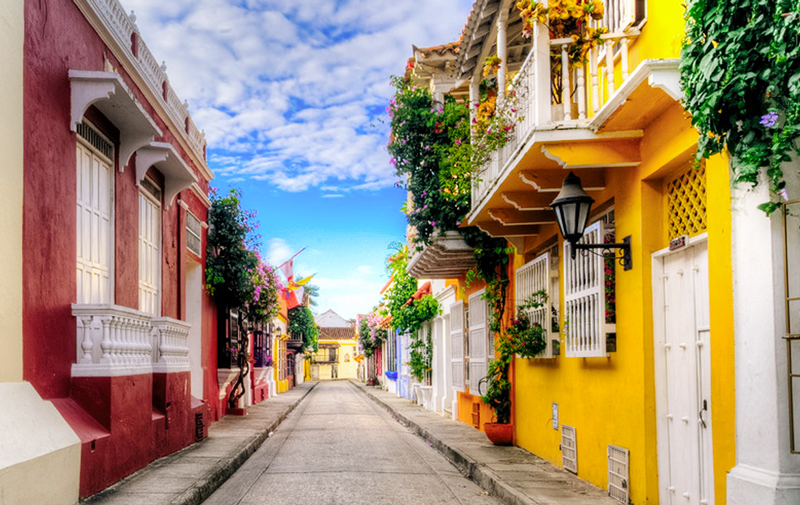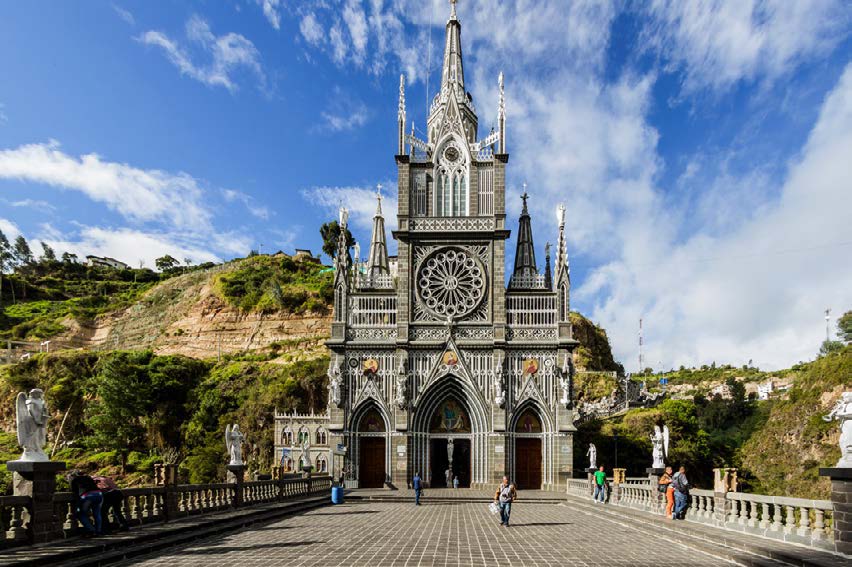DAY 1: BOGOTÁ
- Arrive in Bogotá and transfer to the Sofitel Bogotá Victoria Regia for check-in.
- Bogotá, Colombia, is a city of the future with a troubled past. It was born of conquest in August 1538 by the conquistador Gonzalo Jiménez de Quesada—who arrived in pursuit of El Dorado, the mythical city of gold—developed under colonialism, reborn in revolution, and tried by political uncertainty, corruption, and strife. Yet since around the year 2000, Bogotá has emerged from a difficult past as an innovative city with a robust economy. Indeed, The Economist’s 2013 global-livability report shows Bogotá with the sharpest rise in livability of any other city in the world. It’s a time of peace and reconciliation in Colombia, with Bogotá leading the way to the future.
- We’ll have an early-evening reception for fellow travelers to meet, followed by a light dinner.
DAY 2: BOGOTÁ
- We’ll attend a morning meeting with historian Alberto Leon, who will offer us a framework for understanding Colombia’s recent history.
- After the briefing, we’ll depart the hotel and drive to the Paloquemao market, which is recognized as the Mecca of food sites in Bogotá, bringing together suppliers of meat, vegetables, fruits, packaged goods, seafood, and flowers from all over the country. We’ll experience the multitude of colors and the rich smells of a wide variety of produce. The market is a must-visit for fruit lovers who wish to delve into the full range of exotic produce Colombia has to offer.
- We’ll then head back into the heart of Bogotá, to the La Candelaria neighborhood, where the city was founded, and walk through its cobbled streets. Here, the city’s rich history is ever-present, exemplified by La Candelaria’s many colonial churches, squares, and convents.
- We’ll enjoy lunch at the Hotel de la Opera before beginning our walking tour of the area. We’ll visit the Catedral Primada de Colombia, a spectacular example of 16th-century Spanish architecture and the city’s most recognizable symbol. Close by is the Centro Cultural Gabriel García Márquez, which opened in 2008 and is named after Colombia’s national hero, the Nobel Prize–winning author of One Hundred Years of Solitude. The center features an exhibition room, an auditorium, a bookstore, a coffee shop, and classrooms and spaces for cultural events and lectures. We’ll continue on to the Museo Botero, which houses 208 works donated by the Colombian master artist Fernando Botero—123 of his own works and 85 works by international artists such as Joan Miró, Max Ernst, Salvador Dalí, Marc Chagall, and Pablo Picasso. We’ll stroll by Plaza Bolívar, where a bronze statue (the first public monument in the city) pays tribute to the great libertador Simón Bolívar, who led the fight for Latin America’s independence from Spain. We’ll also stop at the Plaza de Chorro de Quevedo, where oftentimes storytellers can be found regaling crowds with creative accounts of the country’s history.
- We’ll end the day by taking a cable car 1,600 feet up to the Cerro de Monserrate, where we’ll visit an important pilgrimage site. After enjoying panoramic views of the Río Bogotá and La Candelaria, we’ll head to a nearby mansion that was given to Bolívar in 1820 in gratitude for liberating Colombia from the Spaniards. The home is filled with beautiful period pieces, including one of his swords.
- We’ll enjoy dinner this evening at Tabula, which was featured on Anthony Bourdain’s Parts Unknown in 2013.
DAY 3: BOGOTÁ
- We’ll meet this morning with staff members of the National Historic Memory Center and discuss the Victims Law, which was passed in 2011 to address 20-plus years of paramilitary, guerrilla, and state violence, and to support reconciliation initiatives.
- After the briefing, we’ll head east to Villa de Leyva, stopping en route at the Salt Cathedral of Zipaquirá, a Roman Catholic church built within the tunnels of a salt mine 650 feet underground near the town of Zipaquirá. This is an important religious center in which visitors descend underground, passing through 14 chapels representing the Christ’s 14 Stations of the Cross. Carved entirely out of salt, it is one of only three similar churches in the world.
- We’ll have lunch at Zipaquirá’s Brasas del Llano restaurant.
- Next, we’ll return to Bogotá to explore the Gold Museum, which provides an excellent understanding of the city’s historical artistic soul. The museum features the largest collection of pre-Hispanic goldwork in the world, as well as pottery and other archaeological artifacts of the indigenous population. Myths that recur in so many forms of Colombian art can be found here—shamanic animal-men, jagged geometric patterns, and the origins of magical realism, which can be found in so much of the local art and craftsmanship.
- We’ll end the day at Casas Riegner, a renowned art gallery that identifies its mission as “the promotion and dissemination of contemporary art within Colombia and abroad.” Our group will meet with director’s assistant Felipe Villada, who will talk about some of the emerging young Colombian artists the gallery represents.
- Dinner will be at your leisure this evening.



